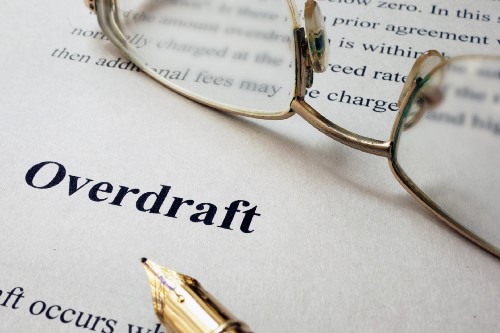My last two posts highlighted a subset of consumers who struggle at the ends of the month: the 9 percent of checking account-holders who overdraft more than 10 times per year and who pay four-fifths of the $15 billion in overdraft and NSF fees banks collect each year.
Much about overdrafting behavior remains a mystery. Given the small amounts and short periods by which overdrafts occur, why aren’t many of them avoidable? Having short term loans available doesn’t seem to help much: At banks where consumers had access to deposit advance loans, those who used the loans were, nevertheless, frequent overdrafters, overdrafting at a rate of 14 times per year. Having the loans available didn’t seem to help them avoid overdrawing. Even more: their rates of overdrafting didn’t go up after these loans were no discontinued. Why didn’t the advances serve as a substitute for overdrafts when both were — essentially — forms of instant credit?
My CFPB colleagues’ analysis of frequent overdrafters’ spending and payment patterns points toward part of the answer: While some overdrafts are incurred intentionally and with forethought, a large portion of them happen when the consumer either doesn’t expect to overdraft, or when she wagers there’s a good chance she won’t. A consumer who doesn’t expect to overdraft — or who has more than a glimmer of hope that she won’t — isn’t likely to take out a loan that will prevent it.
Here’s what we’ve learned:
Transaction histories from 2011 and 2012 showed that, compared to other bank account holders, the frequent overdrafters kept the lowest average balances in their accounts — less than $350 at the median, despite having median monthly deposits of over $2000. They paid out their incomes soonest and they routinely came closest to spending all of their funds. Yet many were also trying hard to make their funds last. As their balances got lower, the banks had told us, these customers used their cell phones and computers to check their account balances more frequently, often several times per day.
We also observed another distinguishing trait of frequent overdrafters: they used their debit cards a lot — about 32 times per month on average, or almost three times as often as non-overdrafters. This wasn’t that surprising, as few of them had access to credit cards that they could use. Non-overdrafters were much more likely to have credit cards available for their daily expenses, enabling them to take advantage of usage rewards (and free float if they paid credit balances off in full).
Our previous research had found that debit card transactions accounted for the majority of overdrafts. This was the case, even though, beginning in 2010, banks were required to obtain an account-holder’s consent before they could charge fees for overdrafts on most debit card and ATM transactions. Since then, banks have generally declined such transactions at the point of sale if funds in the account won’t cover them and the consumer hasn’t “opted-in” beforehand to overdraft coverage on her debit card.
Among the banks we were able to observe, about 20 percent of consumers overall, and about a third of frequent overdrafters, had opted-in to overdrafts on their debit cards; but there was wide variation, with a couple of banks choosing not to allow their customers to opt-in at all. At the other end of the spectrum, some banks have promoted opt-in aggressively, with a few achieving overall opt-in rates of well over 50 percent.
At the Bureau we were especially interested to learn about how the opt-in choice correlated with consumers’ overdraft behavior (and the fees they paid) as we expected the opt-in choice might reflect a consumer’s preference for using overdraft on debit card transactions as a form of credit. What we found surprised us: the two-thirds of frequent overdrafters who had not opted into debit card overdrafts nevertheless overdrew their accounts on debit card transactions almost as much as the one third who had — about 19 times per year vs. 23 times. While the latter paid fees on these transactions (generally $35 each), the former didn’t. Other aspects of these two sub-groups were similar: average balances, monthly deposits, and the number of debit card swipes per month. Overall, the median frequent overdrafter who was opted-in incurred 19 overdraft fees compared to the 5 overdraft fees of a non-opted-in frequent overdrafter — a difference that amounted to about $500 per year in additional cost.
But how could these debit card overdrafts occur at all if the bank would only approve opted-out customers’ transactions if there were enough funds to cover them? The most plausible answers lie in the quirky characteristics of our payment system. The most important quirk is the time lag between when the consumer swipes her card at a merchant and when the transaction settles between her bank and the merchant’s bank. That lag can range from one to three days, enough time to allow outstanding check or electronic bill pay transactions the consumer previously initiated to settle in the interim, drawing down funds in the account so that the debit card transaction settles in the negative, even if there were enough funds at the time the bank authorized it.
Another quirk: sometimes the authorization amount is less than the end purchase amount. This most often happens at restaurants (authorization amounts in the US typically don’t cover tips) and at some gas pumps (where authorizations are sometimes just for token amounts to confirm the account is valid). When the purchase amount is greater, it might be enough to push the account into overdraft at settlement, even when the authorization amount wouldn’t have. And if the authorization is for less than the purchase amount, the consumer’s available balance will overstate how much money is available for subsequent purchases until that transaction settles.[1] [2]
It turns out that most of the card swipes that result in overdrafts happen when the consumer’s banking app shows there is enough available balance to cover the purchase. Some of these overdrafts may result from a consumer’s lapses in memory or mental accounting — e.g. about the automatic debit she authorized her cell carrier to pull from her account each month, the check she recently mailed to cover the water bill, or the tip she added to the restaurant tab. Others may occur after she bet — knowingly, if optimistically — that the timing of payments and deposits would work out in her favor (a bet she often wins). Still others happen because she simply doesn’t understand how our batch-based payment systems work. How many stem from which is difficult to tell.
Overdrafting illustrates — and to a considerable extent, results from — the uncertainty and complexity imposed by our country’s payment system. For the consumers who spend nearly all their funds each pay period, and especially for those who use their debit cards regularly, avoiding overdraft fees (or even using overdrafts judiciously) resembles a game of memory or chance played with imperfect information and against often unpredictable clearing times.
Fortunately, new technologies and tools developed by challenger banks and FinTechs have begun to bring more certainty to cash-strapped consumers enabling them to manage their earnings and spending. They will be the subjects of my next few posts.
Explore the Ends of the Month Series on the Financial Health Network website.

